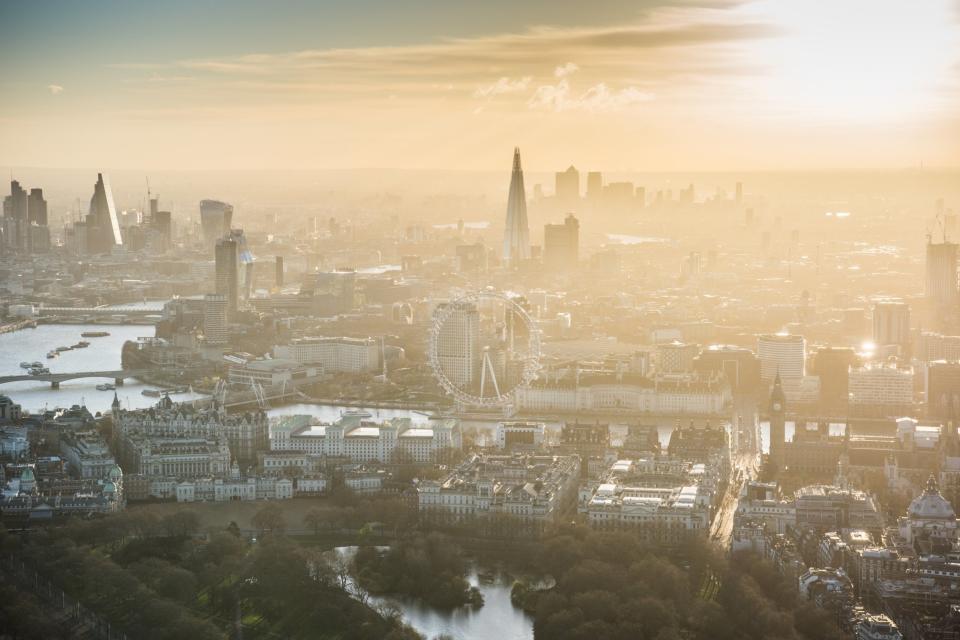The deadly killer we can’t see and refuse to confront

“Humans can live for three weeks without food and three days without water — but only three minutes without air,” says Dr Gary Fuller in his new book. “Yet we simply take our air for granted.” It’s a frustrating paradox. Air pollution claims thousands of lives in London every year, yet is never listed on a death certificate.
Too often those who write about environmental science fail to connect with readers by being dull or depressing. Fuller avoids this. An air pollution scientist at King’s College London, he pioneered the London Air Quality network, “the largest air-quality measuring system of its kind in the world”, as he proudly reminds us.
Fuller first takes us on a breathless, alternative tour, beginning with chimneys belching charcoal in King Charles II’s London, when smog was, remarkably, considered good for the lungs. We meet crackpot Victorian scientists who began exploring the chemistry of air, including Robert Angus Smith, who locked volunteers in a sealed lead chamber about the size of a large telephone box, measuring the effect their breathing had on the composition of air until he could barely feel their pulses, before rewarding them with a warm meal.
Between 1881 and 1885 the smog in London was so thick that only 17 per cent of the winter sunshine measured in the countryside got through to the city centre. In 1952 there was the UK’s “greatest peacetime disaster”, the Great Smog of London, which claimed about 12,000 lives in London and left 15,000 people too ill to work.
“Look around London and you will find no memorial to the 12,000 people who died,” writes Fuller, “although death rates exceeded those during even the worst nights of the Blitz”. As well as a monument to uncelebrated heroes, this book is Fuller’s testimony to the forgotten fallen.
Multinational corporations are the villain here. The power of the petroleum industry is evident, and Fuller pulls no punches describing the “Faustian pact” made by the automotive industry, prepared to sacrifice our environment and future health for its financial gain.
There’s a stark contrast between the Volkswagen engineers who tricked emissions tests by removing wing mirrors and taping over gaps in test vehicles to make them more aerodynamic, and Fuller’s colleagues, with their low-budget efforts to thwart them.
It’s dirty work. At one point Fuller and the scientist Don Stedman lie on deckchairs on a roadside for two days, pointing lasers at car exhausts to test nitrogen oxide emissions. Stedman lets out “a whoop with every result” as their tests confirm that the newest diesel cars and vans are producing the most NO2. It confirms that car companies have been lying, gaming the diesel exhaust limits. But it’s a sad “gotcha” moment, because no one’s listening.
When Fuller travels to Paris for an air pollution workshop to confront the motor industry, there are “more people on the stage than on the audience” and when he confronts a vehicle engineer, the Frenchman laughs in his face.
Fuller, though, has an accessible style. “You will not need a degree in chemistry or physics to understand this book”, he writes, and he’s right, but it is still hard to swallow. It’s the size, not the number, of tiny particles in the air that causes problems. The Clean Air Act 1956 largely solved the smog problem, but left a less obvious one unchecked. Particles in modern air pollution are smaller even than pollen and are breathed more deeply into our lungs. Fuller compares this to dropping a kilo bag each of apples and rice on to the kitchen floor. Drop your apples and they cover a small area, so can be easily picked up; not so with rice.
In an adult body, millions of particles in a single breath can cover the lungs, the surface area of which is the size of half a tennis court, increasing the risk of heart attacks and strokes.
The title of the book is a misnomer; Fuller identifies not one killer, but many. Unchecked ozone emissions destroy between seven and 12 per cent of wheat yields, while household wood fires contributed to about 2.85 million deaths globally in 2015. In the UK alone, nitrogen dioxide emissions from vehicle exhausts are estimated to cause around 23,500 early deaths a year.
However, while there’s plenty of research, Fuller takes too long to reach his solution of “how we fight back”. Perhaps this is a reflection of the world we live in. Only in 2016 did the Royal College of Physicians release a report highlighting the harm that air pollution does to its patients.
Fuller finds fault with most of the “moonshot” technical solutions. There is excitement about portable air-quality sensors that detect high levels of pollution. These would discourage individuals travelling in high-risk areas, for instance, but the data they provide isn’t always accurate. Dismayingly, planting more trees in urban areas reduces air pollution by less than 5 per cent.
Our habits have to change. In 2013, 60 per cent of UK car journeys were under five miles and 40 per cent less than two miles. London’s emission zones and bans on heavy vehicles have been effective, and he heaps praise on London Mayor Sadiq Khan for implementing regulation, but it’s not enough.
Air pollution is a killer, not just because we can’t see it, but because we won’t. We’ve grown used to nipping out to the shops by car, we would rather turn up the heating than put on a jumper and we don’t vote for politicians who prioritise green issues. We’re not monsters, says Fuller. But the resistance needs to be far more visible.
The Invisible Killer: The Rising Global Threat of Air Pollution — and How We Can Fight Back by Gary Fuller (Melville House, £12.99)

 Yahoo News
Yahoo News 